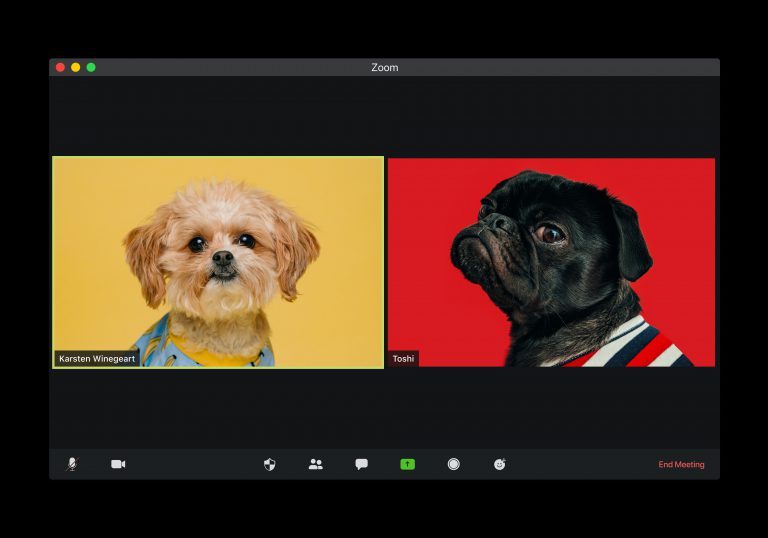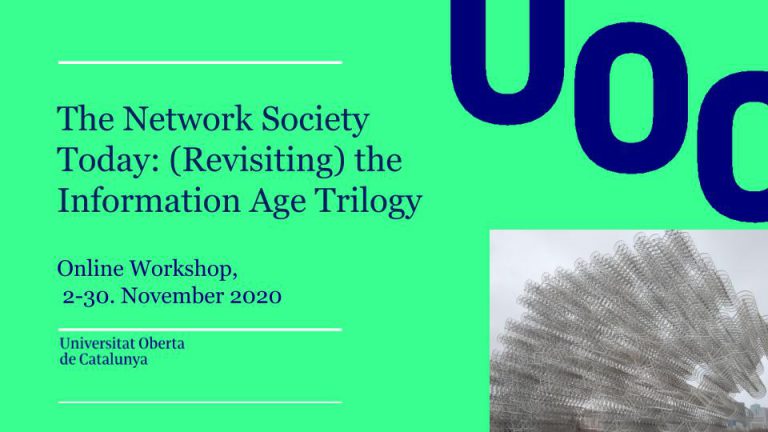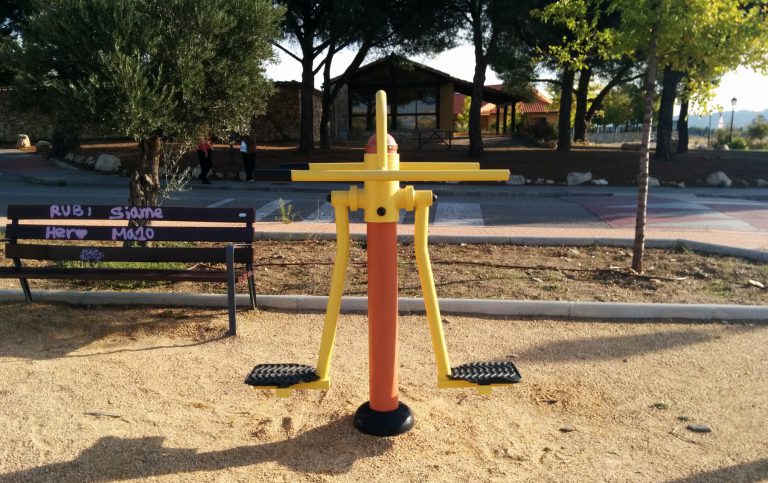2020 is the year of (forced) digital sociability
1 December, 2020
By Daniel Blanche and Mireia Fernández-Ardèvol
It seems that recently we have learned a lot about new tools for social meetings such as Zoom, arguably the platform that has garnered the most popularity. Nowadays, they are part of our daily lives. In other words, and to put it boldly, 2020 is being the year of (forced) digital sociability. We are learning that the COVID-19 pandemic is not only about health or economics. It is also about rediscovering how to keep doing the same things we used to do but in a different, mediated, way. In the past months, reliance on digitality has accelerated in unexpected ways.
Since the outbreak of the COVID-19, we have changed our digital practices and the way we socialize. The obliged physical distancing measures applied in different places made people resort more to technologically mediated communication to maintain contact with their networks. And much of this intensified use of mediated communication belongs to the realm of digital technologies.
In the context of the current pandemic, many questions arise as to how and to what extent people have changed the way they use the digital tools they have at hand, and if so, what specific aspects may be paired with this change. More concretely, we ask: what elements are shaping transformations in people’s digital practices since the pandemic crisis unfolded?
Digital sociability amid a 21st-century pandemic
To answer these questions, we participate in an international project aiming to explore sociability in times of COVID-19 by means of an online survey (see a full description of the study’s protocol here). We rolled out the Spanish and Catalan versions of the survey during three months—between May and August the 4th—through digital channels of public and private access (e.g., social media, emails, instant messaging applications, websites, newsletters, bulletin boards).
Accordingly, we were reaching out to experienced online participants during the downward tale of the so-called “first wave” of the COVID-19 pandemic in most of Europe, while in many countries of the Americas the pandemic spread was growing steadily. Although a common practice in online research, our sampling process’s incidental nature requires avoiding uncritical generalizations as we did not predefine selection criteria based on socio-demographic characteristics but instead relied on the self-selection of Internet users who voluntarily agreed to participate.
We reached a total of 261 valid answers combining the Spanish- and Catalan versions of the questionnaires. A general overview of the sample suggests a prevalence of relatively well-off participants despite the multiple restrictions forced by the pandemic: 78.5% hold a higher education degree (11.5% with a Ph.D.), with a job (79.7%), and with relatively little concern about the economic impacts of the pandemic on their domestic situation (e.g., being unable to pay bills, afraid of losing her or his job). Our participants’ gender distribution is 64.4% females and 33.7%—none of the participants self-reported their gender as non-binary—while most participants fall between 45 and 49 years old of age. Most reported living in Spain (75.9%), while the rest reported living in Latin America or in other European countries (24.1%) when asked in the survey.
An interesting result is that when asked if the participant perceived changes in the way she or he used digital technologies during the COVID-19 crisis, 78.9% reported affirmatively, even if this change was slight, while another 21.1% said the opposite. Given the higher dependency on mediated communication imposed by the current pandemic, it is expected that people adopt new technologies and ways of using them to keep contact with their network members. Simultaneously, people accustomed to a digital component in their daily lives might not perceive any real changes in their relationship with digital technologies. So we wonder, what are the determinants associated with the reported changes, or lack thereof, in their digital practices?
Family, friends, coworkers and…workout sessions
We ran a series of logistic regression models to examine what kinds of elements can predict the participants’ perceived changes in their use of digital technologies. Our results show that changes in their communication patterns with their social networks are a significant and strong predictor of the changes in their use of digital technologies. Although somewhat expected, this result highlights the paramount role of mediated communication in handling digital technologies in their everyday lives.
As we delve more deeply into the specific elements that account for this relationship, we observed that communicating digitally with family and friends, or participating in online work meetings, are not related with their digital changes. Instead, it is the frequency of interactions with their family, friends, colleagues or coworkers that is positively associated with these reported changes. In other words, it is more about the frequency of contact rather than the existence or lack of communication that predicts changes in digital practices.
While communicating with personal and professional networks may not predict these changes, we found participating in online physical exercise sessions—such as yoga or pilates—does. Whether regarded as a health or leisure activity, engaging in online exercise sessions is a relevant reason why our participants reported digital changes during the pandemic crisis. When controlling with other predictor variables (e.g., age, gender, educational level, job situation, living arrangements), we found that only having a job decreases the probability of reporting digital changes. Considering our sample’s characteristics—working professionals with university degrees and relative job or income security—this comes as no surprise since highly-educated professionals are highly digitalized as well. Thus, forced physical distancing is not affecting their digital practices in the labor sphere. Instead, it is their sociability and health or leisure dimensions that are affecting their digital changes.
Interestingly, changes in digital practices are not related to the participants’ country of residence. Considering that in the early spring of 2020, Spain enforced quite a restrictive isolation policy to prevent the virus from spreading, it is noteworthy that residing in Spain or other of the countries reported had a null effect on perceived digital changes.
Digital changes at the private level
To sum up, our preliminary results suggest that since the COVID-19 virus spread across the world, the factors influencing changes in the way our Spanish- and Catalan-literate participants handle their digital technologies belong to the private spheres of social networks communication and physical exercise, while their labor sphere remains apparently unaltered whatsoever. In future steps, we look forward to extending our analysis to our consortium partners’ countries to examine the extent to which this relationship holds or differs in different cultural settings.
Daniel Blanche-T. and Mireia Fernández-Ardèvol are members of the Communication Networks & Social Change Research Group (CNSC) at the Internet Interdisciplinary Institute (IN3) of the Universitat Oberta de Catalunya.





